
In November I had a big birthday to celebrate and did so in style staying in a quirky 15th century cottage right in the middle of Canterbury. One of the previous owners of the property was Nat Field, an actor and dramatist who would have been a contemporary of Marlowe and Shakespeare. His father, John Field, was a puritan who disapproved of all the entertainments his son was involved in. Apparently Nat was a bit of a ladies man who led a wild life and may have fathered a child with the Duchess of Argyll. His name appears as one of the actors in the 1623 First Folio of Shakespeare’s plays. He may well have replaced Shakespeare when he joined the King’s Men in 1616. Like Shakespeare, he spent most of his life in London, presumably retiring to Canterbury, although details are scant, apparently he was forced to quit the stage after a scandal. A facsimile of his portrait watched us from the wall in the bedroom in that eerie way that old portraits do, the original is in the Dulwich Picture Gallery and is impossibly romantic in that wild haired piratic way that a young Shakespeare and Marlowe are depicted… Christopher Marlowe, son of a Canterbury shoemaker, is probably one of the most lauded connections and the cottage was a minute away from the stupendous Marlowe Theatre. So little seems to be known about Nat Field beyond his professional life, he feels ripe for the picking for any budding novelists out there. Susan Cooper, in her children’s novel, King of Shadows, features Nathan Field as a character. Set in 1599, it uses Field’s background as a student of Richard Mulcaster’s at St Paul’s as a springboard. The Nathan Field in the story, who briefly works at Shakespeare’s Globe Theatre, is actually a like-named boy from 1999, who has switched places with the young Elizabethan actor. As you can tell I became rather besotted with the romance of all this!
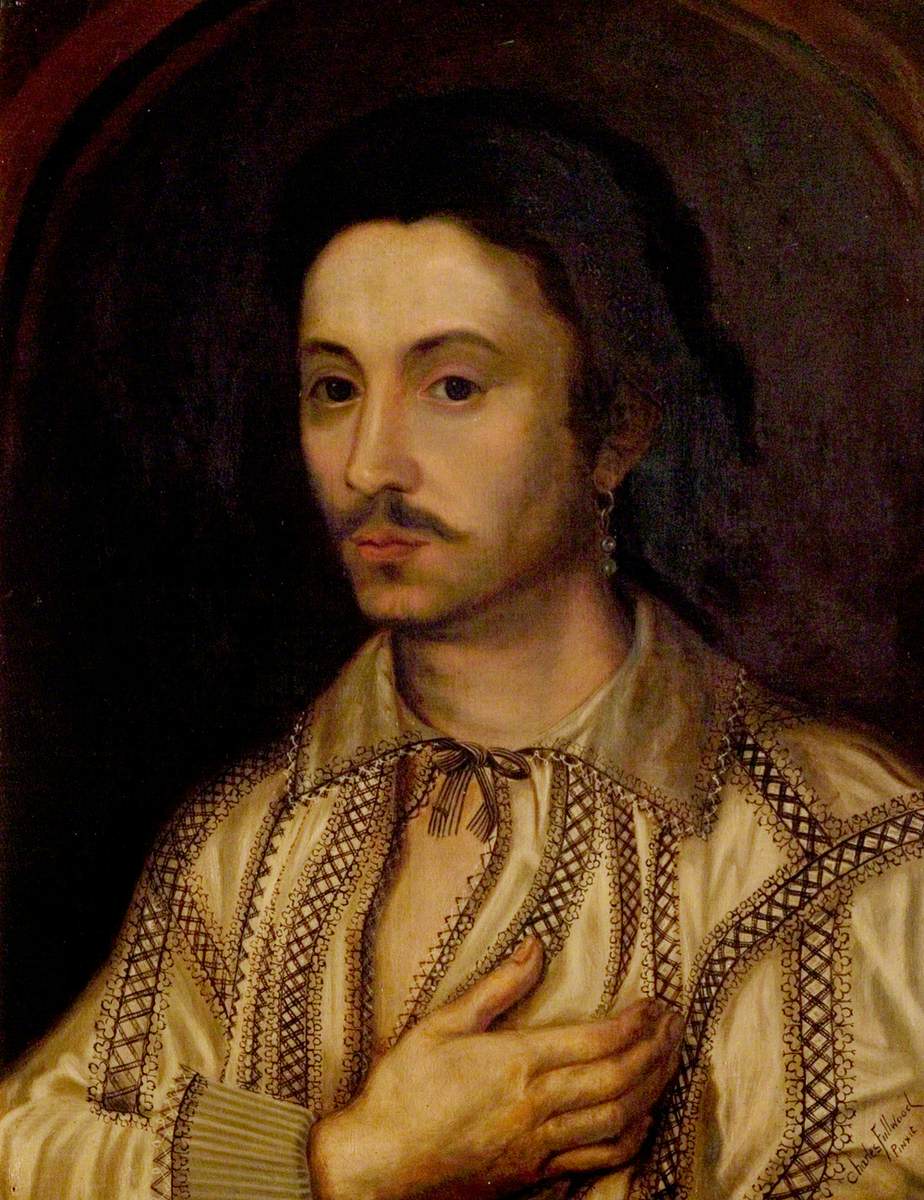
The current owner is also an actor and the cottage was festooned with theatre posters, TV scripts (he was in The Bill for many years) and original artwork.

Canterbury has connections with so many literary figures, including Rupert Bear! Mary Tourtel lived all her life in Canterbury, creating Rupert in 1920 for the Daily Express. Rupert was conceived as a rival to Teddy Tail, who was the star of a popular comic strip in The Daily Mail. When Tourtel’s eyesight deteriorated too much to continue with her illustrations in the 1930s, Alfred Bestall was her replacement. I adore Rupert. We have two framed snowy scenes from a Rupert calendar which come out every Christmas as part of the festivities and a framed Bill Badger scene in our porch!
Chaucer succeeded in putting Canterbury on the map early on with The Canterbury Tales, written between 1387 and 1400 and available in a printed edition from 1476. The reader follows a group of pilgrims from Southwark to Canterbury where they are to visit the tomb of the martyred Bishop, Thomas à Beckett. Their individual tales told in the inns they stay in along the way form the narrative.
Aphra Behn was born just outside Canterbury. She was one of the first English women to earn her living as a writer although, before she became a poet, translator and playwright she was a spy in Antwerp for the Court of Charles II! Just as little is known about Nat Field, or even Shakespeare, and the true nature of Marlowe’s death, Aphra Behn is also somewhat of a mystery. Her biographer, Janet Todd, laments, “she has a lethal combination of obscurity, secrecy and staginess which makes her an uneasy fit for any narrative, speculative or factual. She is not so much a woman to be unmasked as an unending combination of masks.” I do love a shadowy figure that allows space for speculation!
Dickens knew Kent well. In addition to his London residence, he had a house just outside Gravesend, Gad’s Hill Place, for the last fourteen years of his life and had spent much of his youth in Kent. Legend has it that he had always coveted the house, which he had seen on country walks with his father, and he expresses this in The Uncommercial Traveller, a collection of literary sketches and reminiscences:
“Bless you, sir,” said the very queer small boy, “when I was not more than half as old as nine, it used to be a treat for me to be brought to look at it. And now, I am nine, I come by myself to look at it. And ever since I can recollect, my father, seeing me so fond of it, has often said to me, ‘If you were to be very persevering and were to work hard, you might some day come to live in it.’ Though that’s impossible!” said the very queer small boy, drawing a low breath, and now staring at the house out of the window with all his might.
Still from Daved Lean’s 1946 film of “Great Expectations”:

Dickens wrote Great Expectations in his Kent house, penning some wonderfully evocative descriptions of the marshes:
The marshes were just a long black horizontal line … the river was just another horizontal line, not nearly so broad nor yet so black, and the sky was just a row of long angry red lines and dense black lines intermingled …The dark flat wilderness, intersected with dykes and mounds and gates, with scattered cattle feeding on it…the low leaden line of the river…and the distant savage lair from which the wind was rushing, the sea…
I am used to marshland as we have a lot of saltmarshes in North Norfolk, but the Kent marshes seem bleaker and wilder and Dickens captures this desolation and isolation so well. The marshes between Whitstable and Faversham seem unchanged since Magwitch leapt out and terrified poor Pip. Part of the Thames Estuary they used to stretch right up to Westminster and have been drained and embanked since the 12th century. One of my favourite days out during our week away was a trip to Faversham and a long loop into the countryside and back along the saltmarsh. The town is full of medieval buildings, breweries and quirky shops but one of the sights that interested me most of all was
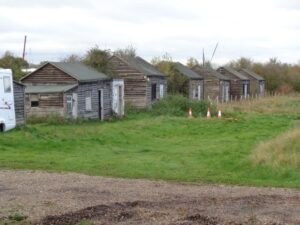 the Cardox factory (left), which opened in 1924 and was part of Faversham’s once extensive explosives industry. Today it looks derelict, but the sheds are still in operation and are deliberately flimsy and far apart from each other to prevent fires spreading and to allow easy rebuilding should an internal explosion occur. Closer to Faversham town is the Chart Gunpowder Mill, the oldest of its kind in the world. Ships would transport the gunpowder along the creek and out via the Medway and Thames to the royal arsenals at Chatham or the Tower of London. You could even argue that the Battle of Trafalgar in 1805 was won in the gunpowder factories of Faversham. Nelson’s ship, HMS Victory, carried 35 tonnes of powder to supply its cannon. I like pretty places but find myself drawn much more to traces of industry and spent ages peeking through the fence at these tumbledown sheds!
the Cardox factory (left), which opened in 1924 and was part of Faversham’s once extensive explosives industry. Today it looks derelict, but the sheds are still in operation and are deliberately flimsy and far apart from each other to prevent fires spreading and to allow easy rebuilding should an internal explosion occur. Closer to Faversham town is the Chart Gunpowder Mill, the oldest of its kind in the world. Ships would transport the gunpowder along the creek and out via the Medway and Thames to the royal arsenals at Chatham or the Tower of London. You could even argue that the Battle of Trafalgar in 1805 was won in the gunpowder factories of Faversham. Nelson’s ship, HMS Victory, carried 35 tonnes of powder to supply its cannon. I like pretty places but find myself drawn much more to traces of industry and spent ages peeking through the fence at these tumbledown sheds!
Faversham Creek was bleak and beautiful on the very cold and windswept day when we did our walk. Daniel Defoe, a customs officer, knew Faversham well, stating in 1724,
“in the arts of that wicked trade the people hereabouts are arrived at such a proficiency that they are
grown monstrous rich.”
The “wicked trade” is, of course, smuggling.
As we got closer to Faversham on our looping walk we had to cross a small wooden bridge over Cooksditch Stream into Ironwharf Boatyard. On the other side of the bridge was a very welcome mirage, Quint’s Retreat. This tiny vintage caravan, run by a cheery lady, supplies tea, cake, bacon butties and toasties to dogwalkers, boatbuilders and very cold tourists. It’s named after Robert Shaw’s character in “Jaws” and was totally unexpected. The boatyard housed some real treasures alongside decommissioned goods wagons which were stranded when a section of the railway track was dismantled.
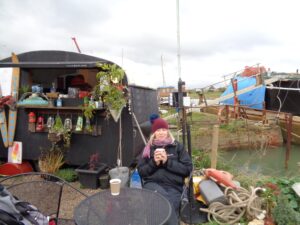
Faversham’s architecture is outstanding and another of my favourites was this magnificent warehouse (below) which stored locally grown hops ready to be transported up the creek to the London Hop Exchange. My mother’s family were East Enders and, during the war they spent a lot of time living in Kent hop huts, bringing in the harvest and part of their evacuation duties. My aunt remembers the whole family living in one hut with all the kids joining in at harvest time and my Nan sitting in state ready to receive the hopheads.
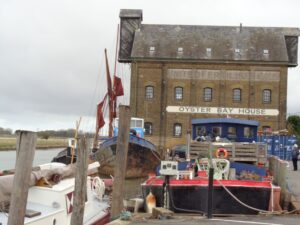
There was so much more to explore in Faversham, such as the remnants of the once thriving brick industry and the priory and abbey vestiges. The four-mile walk took us all day to complete and it felt as if there was much more to discover in Faversham’s layered history.
Another passion of mine is run-down seaside places. Fortunately, we were a stone’s throw from the coast as I start to pine if I can’t get to the sea regularly. As well as a brilliant trip to Whitstable we also walked from Margate to Ramsgate. I’d love to go to Dreamland, Margate’s vintage theme park dating back from the end of the nineteenth century when an entrepreneur reclaimed it from the saltmarsh. It’s changed a lot since then, of course, and its current status is a little hazy. We could see into the site from our train to Margate and it looked fantastic. The boards around the site contain some wonderful artwork combined with the memories of locals:
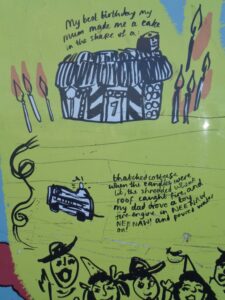
As the text is a bit blurry, but also totally brilliant, I’ve transcribed it here:
“My best birthday my Mum made me a cake in the shape of a thatched cottage.”
“When the candles were lit, the shredded wheat roof caught fire and my Dad drove a toy fire engine in NEE NAW NEE NAW! and poured water on!”
The town itself is a strange mixture of decrepit and genteel and all the bits in between. Tracey Emin clearly had a large part to play in putting Margate back on the map from its heyday as a popular seaside resort. Over Droit House, one of the most distinctive buildings on the seafront, is Emin’s neon artwork “I never stopped loving you,” her love letter to the town where she grew up.
T S Eliot wrote part of The Wasteland in Margate. There’s a really interesting article here:
https://www.theguardian.com/books/2009/nov/09/ts-eliot-waste-land-margate
And a great quote in the waiting room/toilets area of Margate Station:
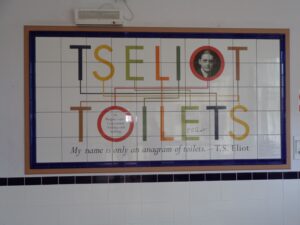
“My name is only an anagram for toilets.”
T S Eliot
As we walked along the front for our walk to Ramsgate we were surprised to see a figure seemingly standing in the sea as the waves washed over his head. A bit of zooming and googling with phones and cameras showed that it was, in fact, one of Anthony Gormley’s Another Time cast iron figures (number 23 out of the hundred cast, to be precise). They have been placed all over the world and are very similar to the Another Place figures, again 100 in total, all facing out to sea on Crosby Sands. It felt as if one of these figures had waded round the coast until it came to rest in Margate.
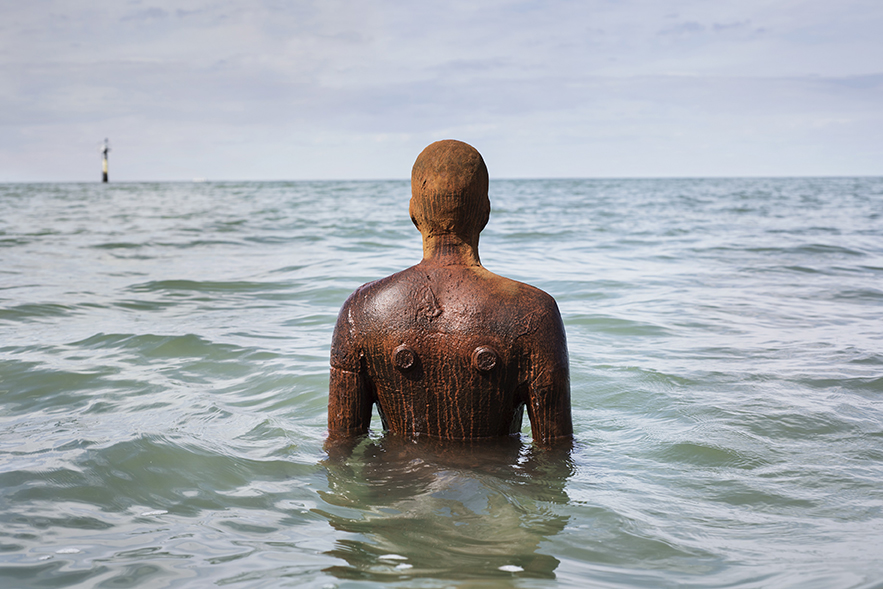
The walk to Ramsgate was splendid. One of the highlights was this amazing chalk arch on Kingsgate Bay on the way to Broadstairs.
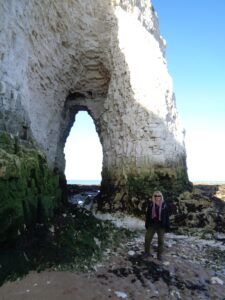
And another highlight was Broadstairs itself with its distinctive bay and Dickens connections. I spent a couple of years in Broadstairs as a very young child and have very blurred memories of it, I think I was about eighteen months old or younger when we arrived and getting on for four when we left. But I’m sure I remember Morelli’s and who wouldn’t? It’s an institution and provided a great rest-stop for the final leg of our walk.

Canterbury was a great base and we explored the town and Cathedral thoroughly, but it was the harsh landscapes of the Kent coast and countryside which really spoke to me. I’m sure there are poems brewing, particularly from the weird and wonderful sculptures, found pieces I snapped along the way!
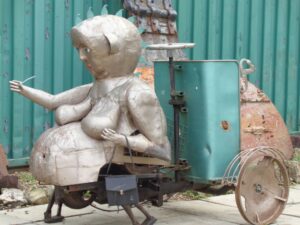
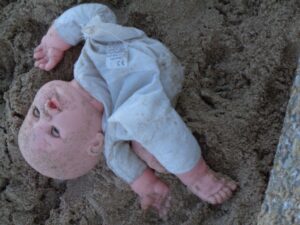

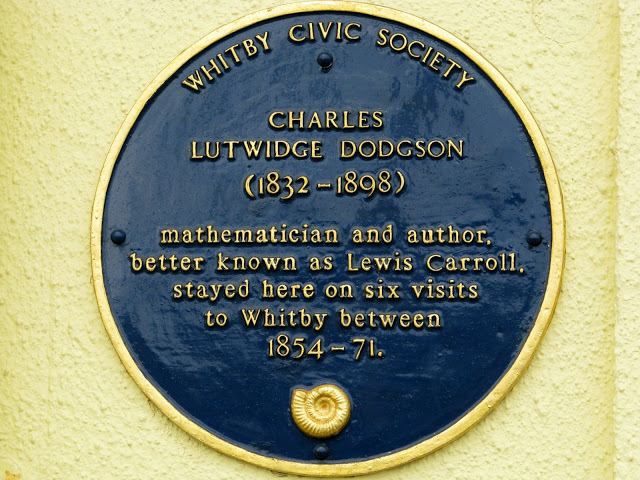
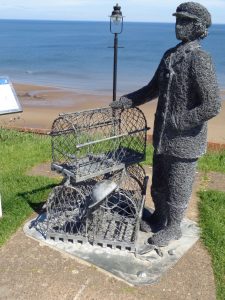
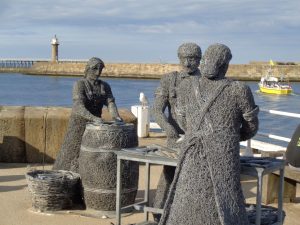

 The coast path which forms part of the Cleveland Way and which runs from Saltburn to Filey is stunning. We had done the Filey to Scarborough section in 2019 on my birthday in November so we focused on Saltburn to Scarborough and completed it in four stages – Saltburn to Staithes, Staithes to Whitby, a circular walk from Whitby to Robin Hood’s Bay (outward on the coast path and back on the Cinder Path, following the old railway line) and, finally, the biggie, Scarborough to Robin Hood’s Bay. The latter was definitely the most challenging, lots of steep steps up and down the crevices in the cliffs and lots of steep walks as the cliffs got higher.
The coast path which forms part of the Cleveland Way and which runs from Saltburn to Filey is stunning. We had done the Filey to Scarborough section in 2019 on my birthday in November so we focused on Saltburn to Scarborough and completed it in four stages – Saltburn to Staithes, Staithes to Whitby, a circular walk from Whitby to Robin Hood’s Bay (outward on the coast path and back on the Cinder Path, following the old railway line) and, finally, the biggie, Scarborough to Robin Hood’s Bay. The latter was definitely the most challenging, lots of steep steps up and down the crevices in the cliffs and lots of steep walks as the cliffs got higher.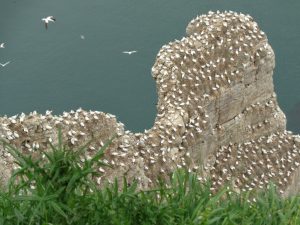

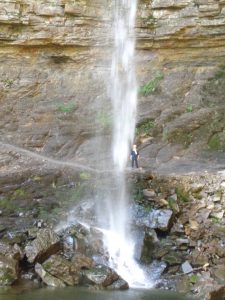
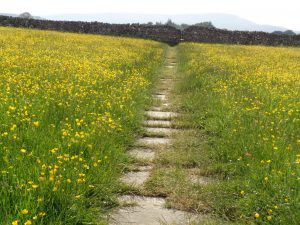
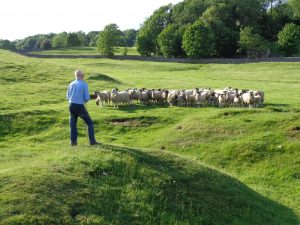
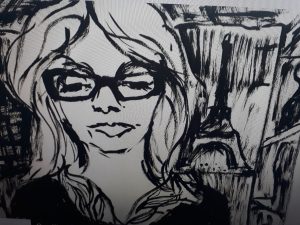

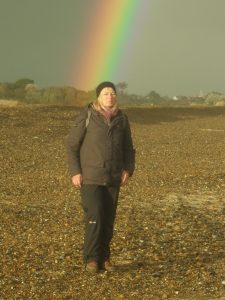

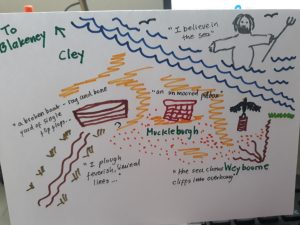

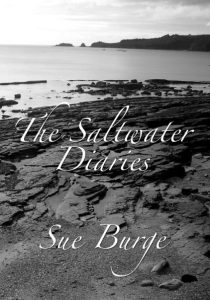 I’m delighted to announce that my new pamphlet (or chapbook as my American friends call it), The Saltwater Diaries, will be coming out in September. The collection explores my relationship with the sea, formed over the last five decades and more, and features poems mostly written since moving to a house which is a seven-minute-walk from the sea. Many of the poems mention swimming and, as it’s the season for sea swimming (well, for me, anyway, not being quite as hardy as some I know who swim all year round!) I thought it would be a good time to reflect on the joys of wild swimming.
I’m delighted to announce that my new pamphlet (or chapbook as my American friends call it), The Saltwater Diaries, will be coming out in September. The collection explores my relationship with the sea, formed over the last five decades and more, and features poems mostly written since moving to a house which is a seven-minute-walk from the sea. Many of the poems mention swimming and, as it’s the season for sea swimming (well, for me, anyway, not being quite as hardy as some I know who swim all year round!) I thought it would be a good time to reflect on the joys of wild swimming.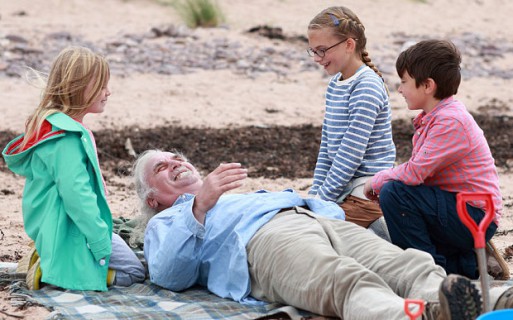
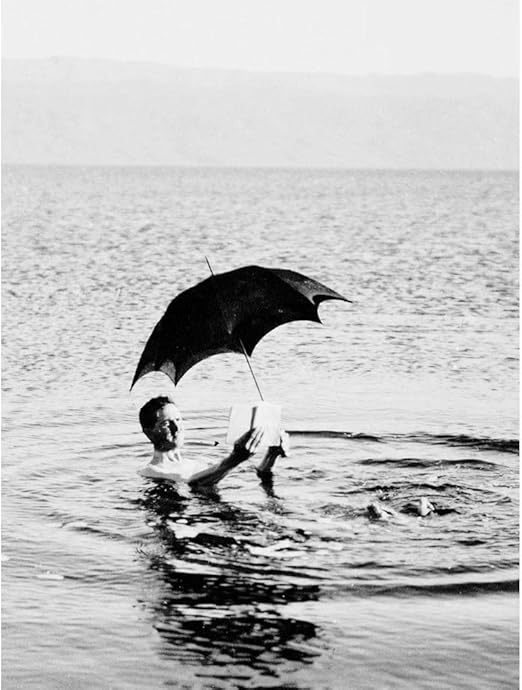
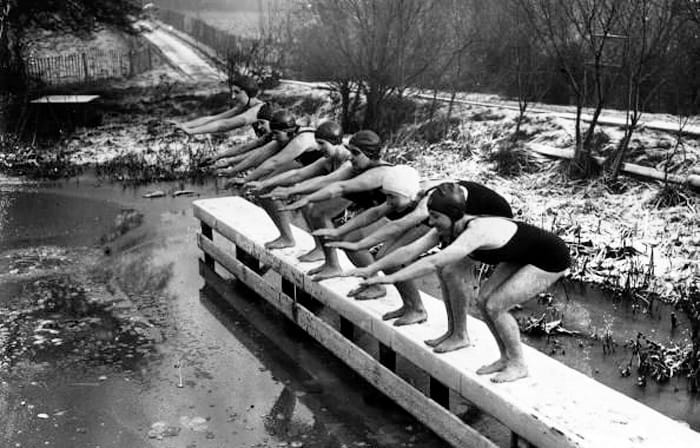

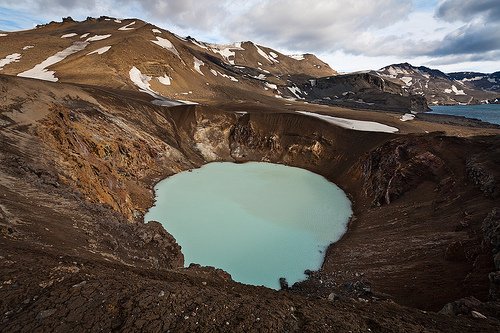


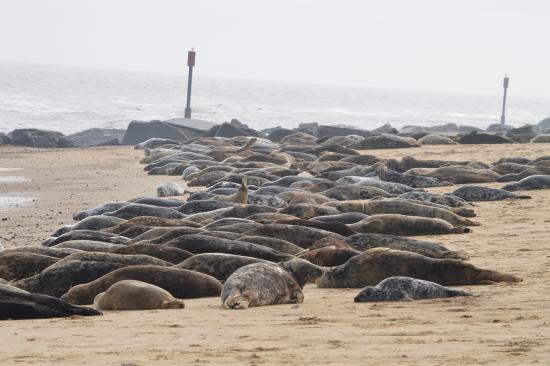
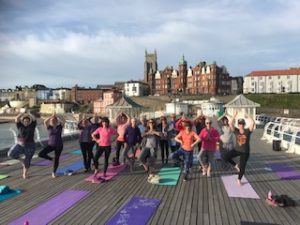



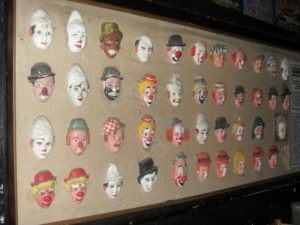

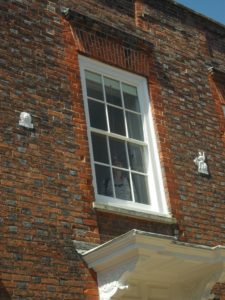 Summer wouldn’t be summer without a reading list and I’ve been revisiting the classics this year, inspired by visits to two wonderful writers’ houses during our week’s holiday in Hastings. First stop was Lamb House in Rye where Henry James lived from 1897 until 1914. He wrote many of his most famous works here, including my particular favourite, The Turn of the Screw. If you look closely at the photo on the left you might see a shadowy figure doing a little light haunting… Joan Aitken’s book The Haunting of Lamb House is a supernatural tale featuring both Henry James and his friend friend E F Benson who lived there from 1914 onwards and who also wrote ghost stories. Benson’s celebrated Mapp and Lucia stories are set in “Tilling” which was modelled on Rye. Mapp and Lucia’s home, “Mallards” is, of course, Lamb House. Rumer Godden, one of my favourite writers when I was a child, lived there from 1967 to 1974. Her book, A Kindle of Kittens, is set in Rye. I particularly adored Miss Happiness and Miss Flower, the story of two Japanese dolls and how their new owner, Nona, a homesick little girl, decides to build them a Japanese house. I’m sure my love of all things Japanese stems from learning, along with Nona, what the dolls might like to be surrounded with to lessen their homesickness.
Summer wouldn’t be summer without a reading list and I’ve been revisiting the classics this year, inspired by visits to two wonderful writers’ houses during our week’s holiday in Hastings. First stop was Lamb House in Rye where Henry James lived from 1897 until 1914. He wrote many of his most famous works here, including my particular favourite, The Turn of the Screw. If you look closely at the photo on the left you might see a shadowy figure doing a little light haunting… Joan Aitken’s book The Haunting of Lamb House is a supernatural tale featuring both Henry James and his friend friend E F Benson who lived there from 1914 onwards and who also wrote ghost stories. Benson’s celebrated Mapp and Lucia stories are set in “Tilling” which was modelled on Rye. Mapp and Lucia’s home, “Mallards” is, of course, Lamb House. Rumer Godden, one of my favourite writers when I was a child, lived there from 1967 to 1974. Her book, A Kindle of Kittens, is set in Rye. I particularly adored Miss Happiness and Miss Flower, the story of two Japanese dolls and how their new owner, Nona, a homesick little girl, decides to build them a Japanese house. I’m sure my love of all things Japanese stems from learning, along with Nona, what the dolls might like to be surrounded with to lessen their homesickness.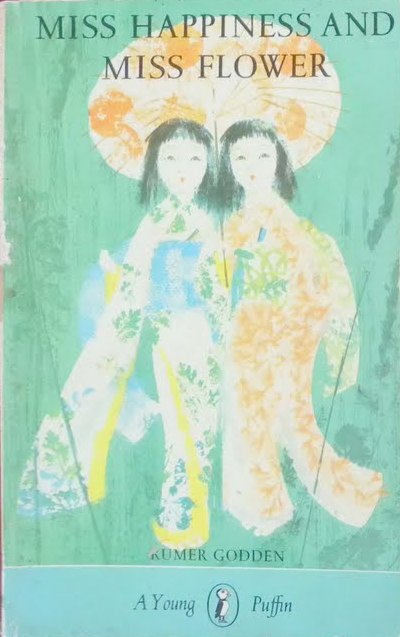

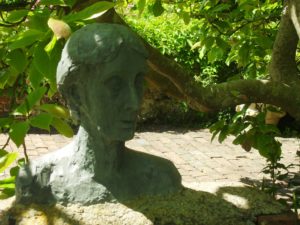
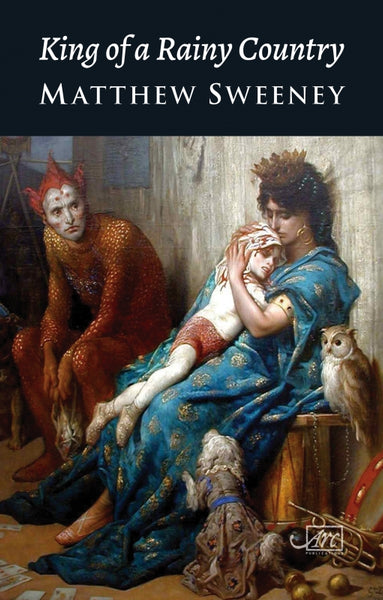
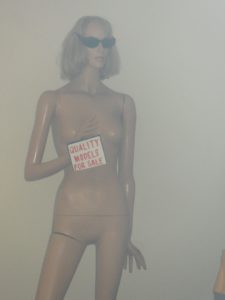
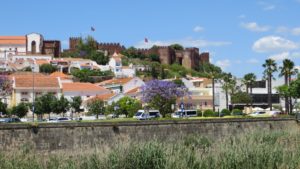
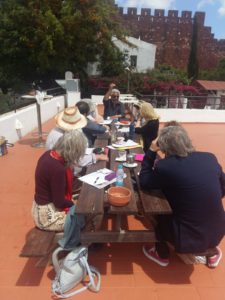
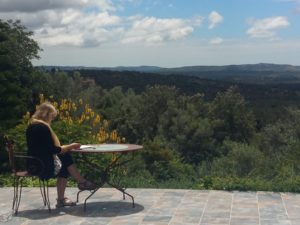 multiple guises, unpindownable…
multiple guises, unpindownable…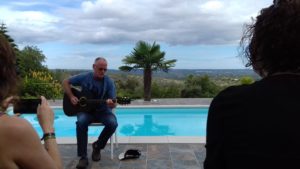
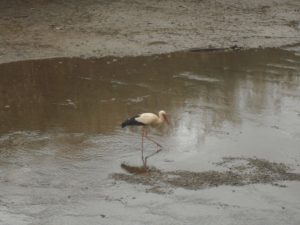
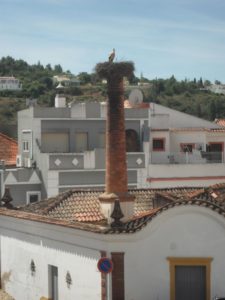
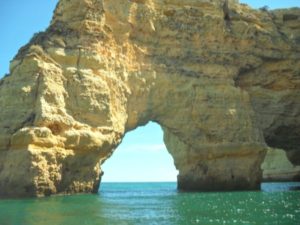
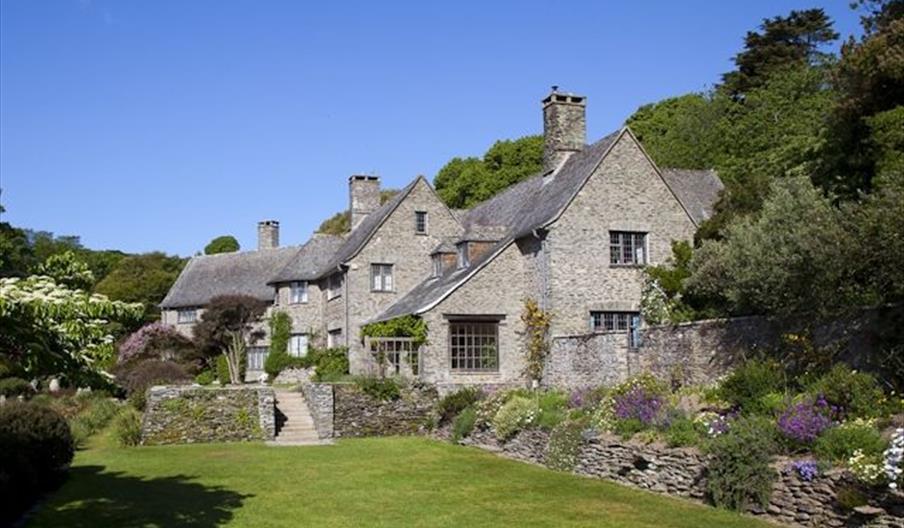
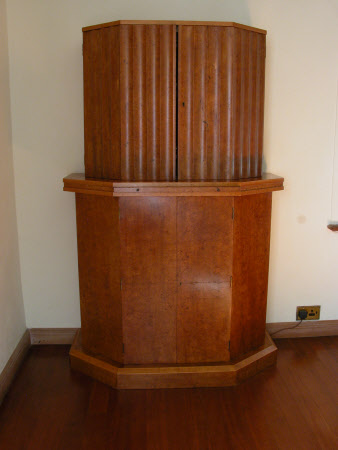

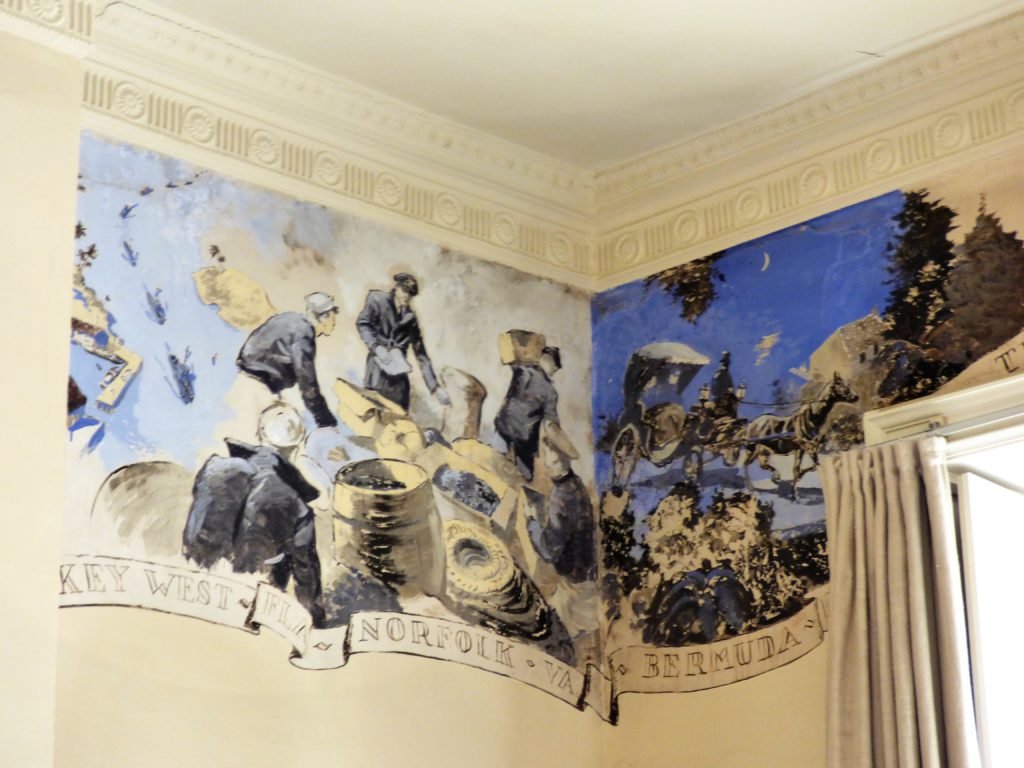

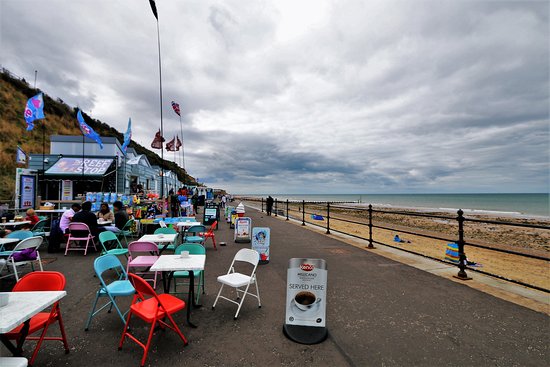


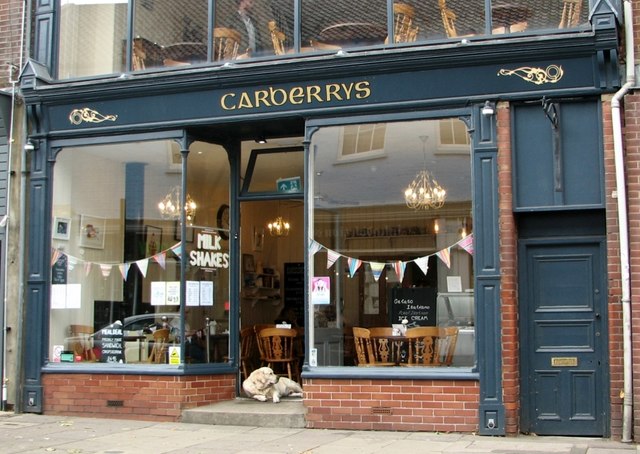
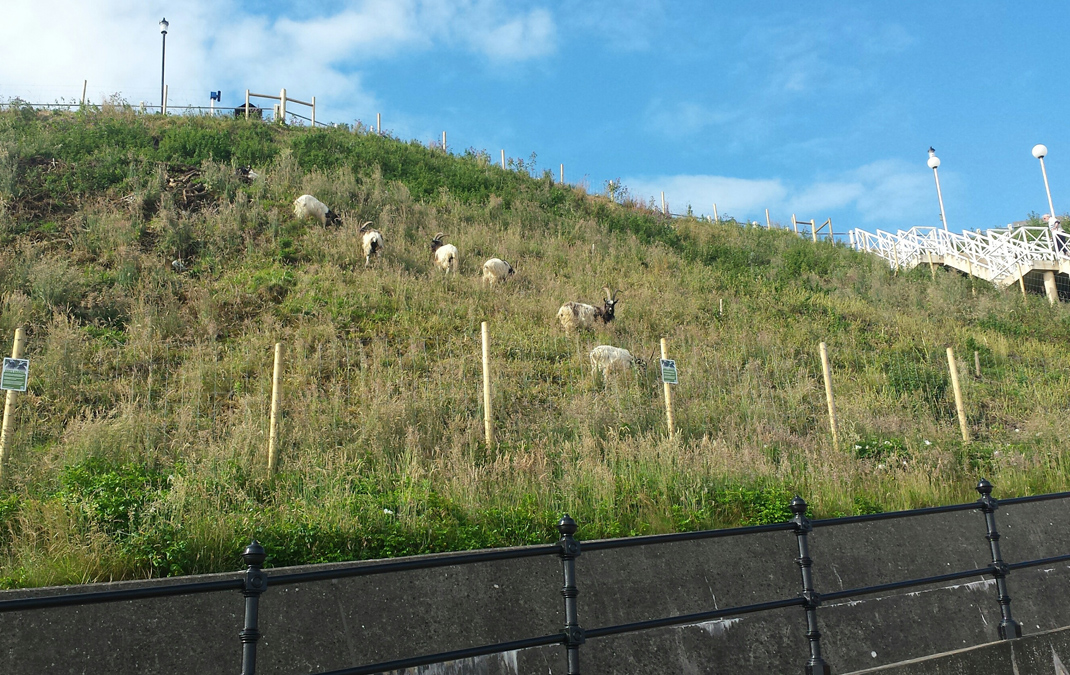
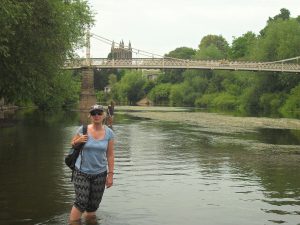
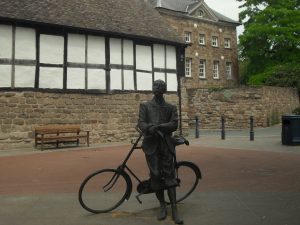


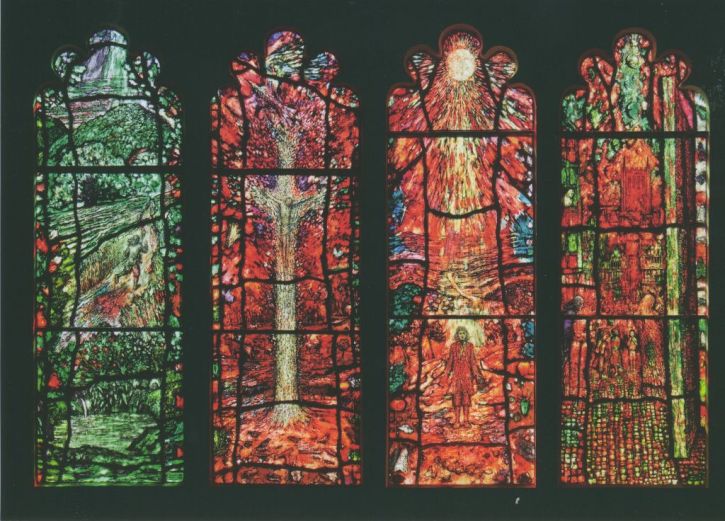
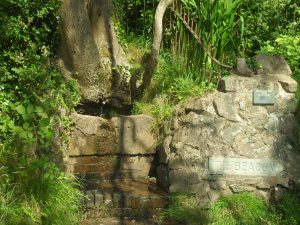


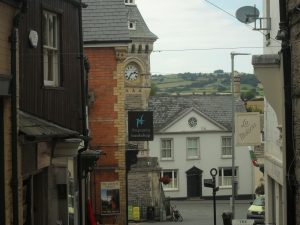

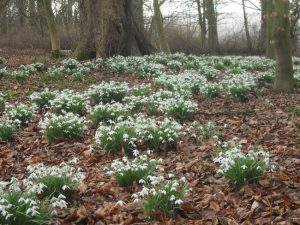


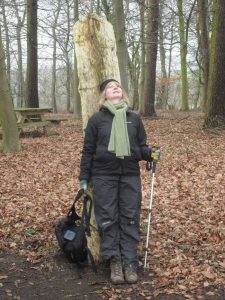
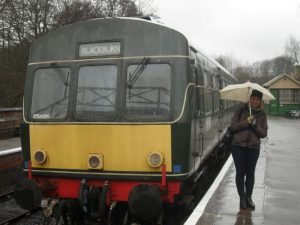
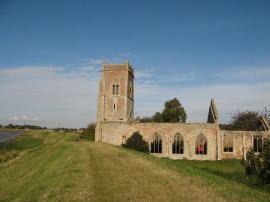
 I’ve just finished The River by Olivia Laing which follows the course of another Ouse, the one in Sussex in which Virginia Woolf took her life in 1941 wearing her heaviest coat, pockets full of stone. It’s a depressing but fascinating book, Laing had just split up with her partner and her sense of anxiety and unease permeates every step as she walks alone in deep contemplation. Occasionally Laing launches herself into the water to cool down and revitalise, these are disturbing moments during which she seems to have little regard for her safety and I held my breath until the next page, willing her to survive. I’ve just reviewed Elizabeth Jane Burnett’s Swims (Penned in the Margins). This powerful collection is a long poem documenting twelve wild swims across the UK’s rivers, lakes and seas. Each poem is an experiment, pushing at the page, seeking freedom from its confines and I thoroughly enjoyed the inventiveness of it. The thought of wild swimming entrances me and I’m even thinking of investing in a wetsuit for all year round sea swimming. Swimming is where I plan my writing workshops and solve poetic problems – that tricky last line, what to leave out, the perfect twist for a line, the revelation of the ideal form to fit the content of the poem – it’s as if the beat of my arms and legs sets up a problem-solving rhythm.
I’ve just finished The River by Olivia Laing which follows the course of another Ouse, the one in Sussex in which Virginia Woolf took her life in 1941 wearing her heaviest coat, pockets full of stone. It’s a depressing but fascinating book, Laing had just split up with her partner and her sense of anxiety and unease permeates every step as she walks alone in deep contemplation. Occasionally Laing launches herself into the water to cool down and revitalise, these are disturbing moments during which she seems to have little regard for her safety and I held my breath until the next page, willing her to survive. I’ve just reviewed Elizabeth Jane Burnett’s Swims (Penned in the Margins). This powerful collection is a long poem documenting twelve wild swims across the UK’s rivers, lakes and seas. Each poem is an experiment, pushing at the page, seeking freedom from its confines and I thoroughly enjoyed the inventiveness of it. The thought of wild swimming entrances me and I’m even thinking of investing in a wetsuit for all year round sea swimming. Swimming is where I plan my writing workshops and solve poetic problems – that tricky last line, what to leave out, the perfect twist for a line, the revelation of the ideal form to fit the content of the poem – it’s as if the beat of my arms and legs sets up a problem-solving rhythm.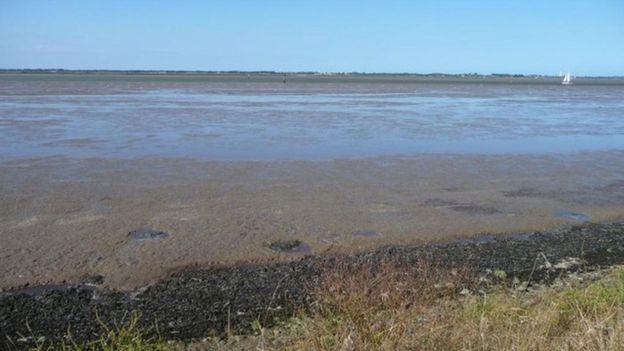 Another favourite river walk is the Nar Valley Way. We’ve walked from Gressenhall (near the source) back to Narborough several times and have done the Narborough to King’s Lynn stretch too. It’s more valley than river, although the river does pop up in surprising places along the way. My favourite stretch is Narborough to Castle Acre. Early on in the walk there’s a distant view of Narford Hall, seat of the Fountaines, where in the 1960s Andrew Fountaine, founder member of the BNP created an annual Aryan camp. Or perhaps we’re better off remembering Margaret Fountaine of South Acre, diarist, lepidopterist and explorer in an era (1890s onward) when this was just not “done”, especially as it seems that the much-travelled Margaret may have had an “affectionate relationship” with her guide and trasnlator of 27 years, Khalil Neimy. The large number of monastic ruins strewing the countryside are a great feature of the walk, all found near clean flowing water to meet the monks’ needs. Walking past The Stag at West Acre and then down to the Fords, you get tantalising glimpses of the ruined priory of West Acre before crossing the water meadows and coming out at the ruins of Castle Acre, a Cluniac Priory dating back to 1090.
Another favourite river walk is the Nar Valley Way. We’ve walked from Gressenhall (near the source) back to Narborough several times and have done the Narborough to King’s Lynn stretch too. It’s more valley than river, although the river does pop up in surprising places along the way. My favourite stretch is Narborough to Castle Acre. Early on in the walk there’s a distant view of Narford Hall, seat of the Fountaines, where in the 1960s Andrew Fountaine, founder member of the BNP created an annual Aryan camp. Or perhaps we’re better off remembering Margaret Fountaine of South Acre, diarist, lepidopterist and explorer in an era (1890s onward) when this was just not “done”, especially as it seems that the much-travelled Margaret may have had an “affectionate relationship” with her guide and trasnlator of 27 years, Khalil Neimy. The large number of monastic ruins strewing the countryside are a great feature of the walk, all found near clean flowing water to meet the monks’ needs. Walking past The Stag at West Acre and then down to the Fords, you get tantalising glimpses of the ruined priory of West Acre before crossing the water meadows and coming out at the ruins of Castle Acre, a Cluniac Priory dating back to 1090.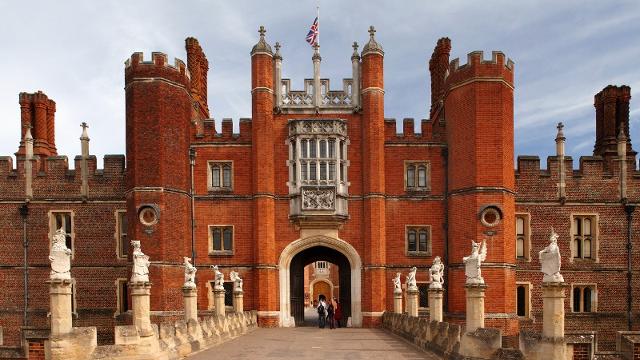 I guess it’s no suprise that I’m so attracted to rivers. My father was a boatbuilder and I grew up in Kingston-upon-Thames so the river was always a strong presence through my formative years. At the end of the road where I lived for most of my childhood was the Hogsmill, a tributary of the Thames which, one memorable evening, overflowed – I remember my mother furiously sweeping it back under the door. Kingston was well situated for visits to Kew Gardens on the bus with twopence entry posted in the honesty box. I would walk along the Thames to Hampton Court where under sixteens could get in for a couple of shillings. It’s probably here that my love of history began as I devoured Jean Plaidy and stood with my eyes closed in the Haunted Gallery where Catherine Howard is said to have begged Henry for her life, hoping to hear her cries.
I guess it’s no suprise that I’m so attracted to rivers. My father was a boatbuilder and I grew up in Kingston-upon-Thames so the river was always a strong presence through my formative years. At the end of the road where I lived for most of my childhood was the Hogsmill, a tributary of the Thames which, one memorable evening, overflowed – I remember my mother furiously sweeping it back under the door. Kingston was well situated for visits to Kew Gardens on the bus with twopence entry posted in the honesty box. I would walk along the Thames to Hampton Court where under sixteens could get in for a couple of shillings. It’s probably here that my love of history began as I devoured Jean Plaidy and stood with my eyes closed in the Haunted Gallery where Catherine Howard is said to have begged Henry for her life, hoping to hear her cries.
 And if tea really isn’t your tipple of choice then head back to Cambridge and check out Hot Numbers on Trumpington Street, just past the Fitzwilliam. This roastery and cafe really does know its beans, specialising in single origin coffee. I’ve had the most layered and tasty coffees ever here so do give it a try!
And if tea really isn’t your tipple of choice then head back to Cambridge and check out Hot Numbers on Trumpington Street, just past the Fitzwilliam. This roastery and cafe really does know its beans, specialising in single origin coffee. I’ve had the most layered and tasty coffees ever here so do give it a try!